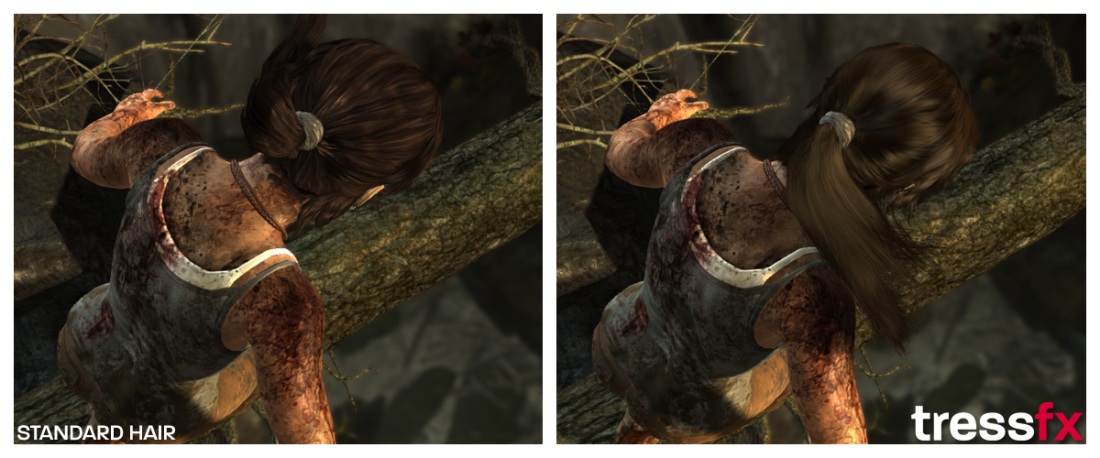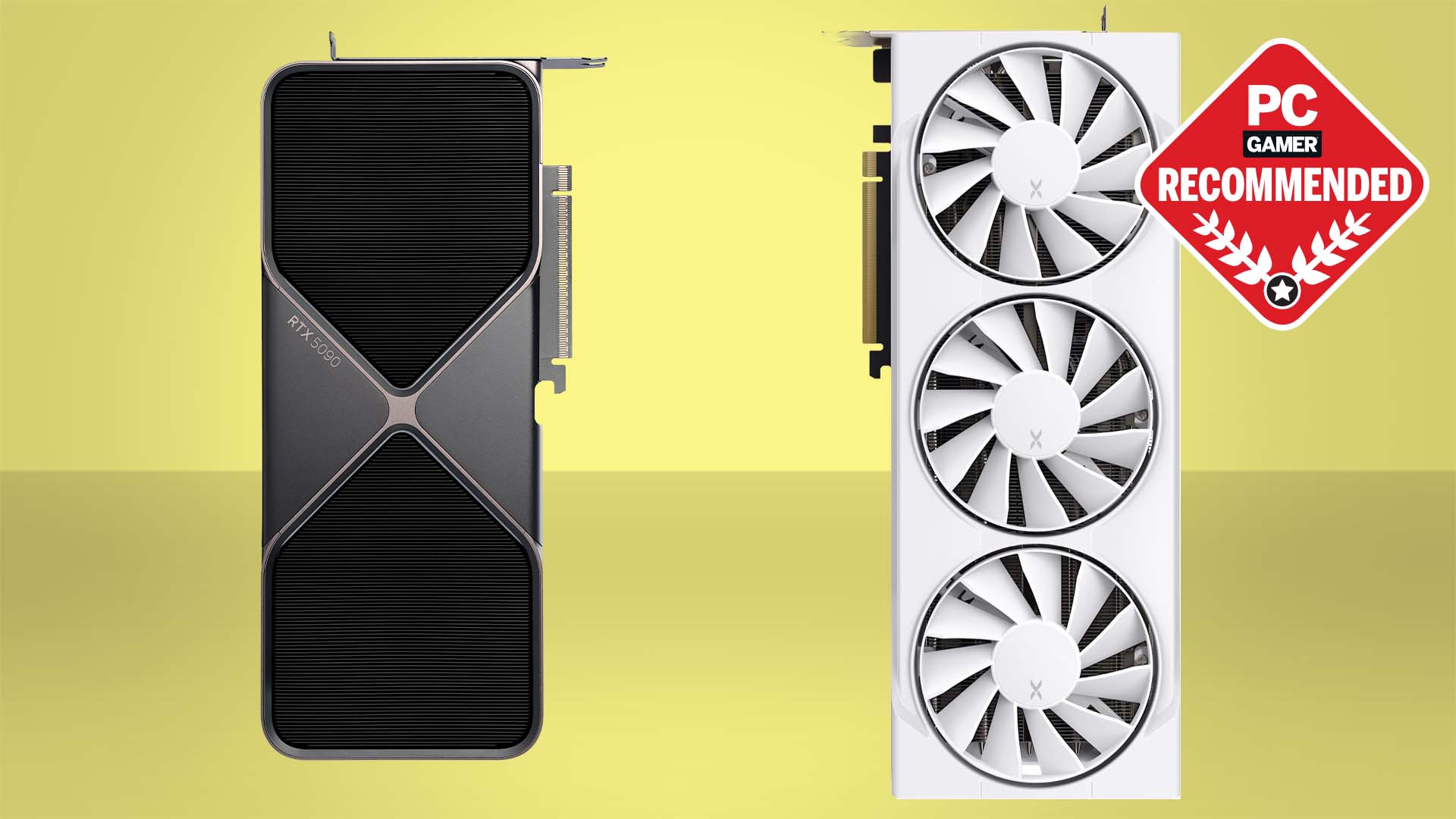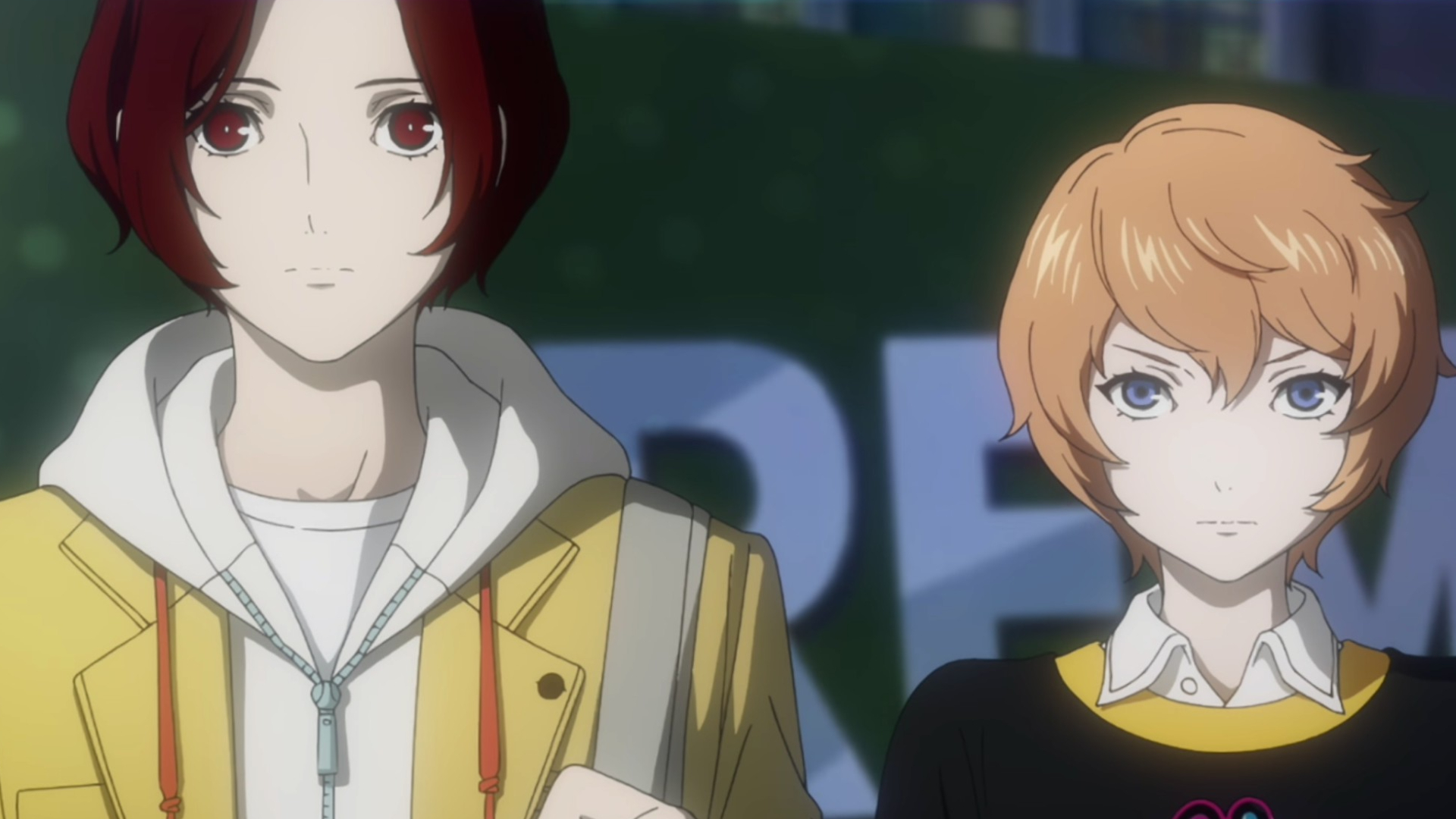Hardware report card: Nvidia vs AMD

Exclusive graphics features: Nvidia GameWorks and AMD TressFX
For years, AMD and Nvidia have been landing exclusive partnerships with game developers to optimize games for their hardware. An Nvidia or AMD logo appears before the title screen, and framerates often favor the partner’s graphics cards thanks to close collaboration. More recently, both have developed some exclusive technology to feature in those games that also performs better on their own hardware.
For AMD this was TressFX, used for Lara Croft’s hair in Tomb Raider. Nvidia has a much wider library of technology called GameWorks that it offers to game developers. GameWorks includes post-processing like TXAA and HBAO+, HairWorks for hair and fur rendering, PhysX for GPU-accelerated physics, and more. As proprietary software, GameWorks is naturally optimized for Nvidia’s hardware. And this causes some problems.
The most basic problem: some GameWorks features aren’t available to AMD card owners. That sucks for AMD owners, but it does make sense: Nvidia invests a good deal of time, manpower and money into developing these proprietary technologies. And some features like Nvidia HairWorks that do work on AMD cards tend to brutalize AMD’s performance. AMD has called this intentional sabotage, while in other instances developers have blamed AMD for not working with them to optimize game performance.
This passage from ExtremeTech does a good job of summarizing this issue:
“Whether GameWorks impairs performance on competing hardware depends entirely on how you parse the meanings behind the statement. Nvidia would argue that incorporating a GameWorks library doesn’t intrinsically impair competing hardware because HairWorks is an optional, user-controlled setting. Integrating a GameWorks library doesn’t impact performance in the title as a whole — if HairWorks doesn’t run properly on an AMD chip, turning it off fixes the problem (from Nvidia’s perspective, at least).
AMD would argue that “impair” has a wider meaning than Nvidia has assigned it. As we discussed last year, one of the differences between the two firms is that AMD tends to rely more on source code optimization than Nvidia does, which means closed-source libraries tend to hurt Team Red more than Team Green. Claiming that AMD could write its own libraries to accomplish essentially the same tasks ignores the fact that game developers adopt libraries to simplify their lives, and relatively few of them are willing to adopt two different solutions for doing the same thing. Practically speaking, AMD doesn’t have the financial resources to attack Nvidia head-on in this fashion in any case. Thus, from AMD’s perspective, GameWorks absolutely impairs its own ability to optimize code.”
AMD is more of a proponent of open source software than Nvidia, but that’s the way it goes with the underdog—AMD doesn’t have the same investment in software engineering that Nvidia has with GameWorks. Still, they put their money where their mouth is with TressFX, making it open source and working to ensuring that it can run as well on Nvidia hardware as AMD’s own.
Keep up to date with the most important stories and the best deals, as picked by the PC Gamer team.

Nvidia’s GameWorks libraries may be good for game developers, and it’s fair for Nvidia to keep that code proprietary. Nvidia’s assistance in development and driver optimization, with engineers embedded within development studios, is also a good thing. But the way games are increasingly optimized along Green Team and Red Team party lines is bad for PC gaming overall. It’s limiting and punishing to some players, often for the sake of marketing and branding opportunities. Both companies are guilty of this, and it’s unlikely to stop any time soon.
Nvidia: B-
Graphics libraries and support help developers, but exclusivity can be harmful to the platform as a whole.
AMD: B
More limited graphics features and optimization issues aside, AMD is more committed to open source with tech like TressFX. But it still makes exclusivity deals that can be harmful to the platform.
Report card table of contents
The graphics cards
Graphics driver updates and performance
Graphics driver software
Exclusive features: Gameworks and TressFX
FreeSync vs. G-Sync

Wes has been covering games and hardware for more than 10 years, first at tech sites like The Wirecutter and Tested before joining the PC Gamer team in 2014. Wes plays a little bit of everything, but he'll always jump at the chance to cover emulation and Japanese games.
When he's not obsessively optimizing and re-optimizing a tangle of conveyor belts in Satisfactory (it's really becoming a problem), he's probably playing a 20-year-old Final Fantasy or some opaque ASCII roguelike. With a focus on writing and editing features, he seeks out personal stories and in-depth histories from the corners of PC gaming and its niche communities. 50% pizza by volume (deep dish, to be specific).


